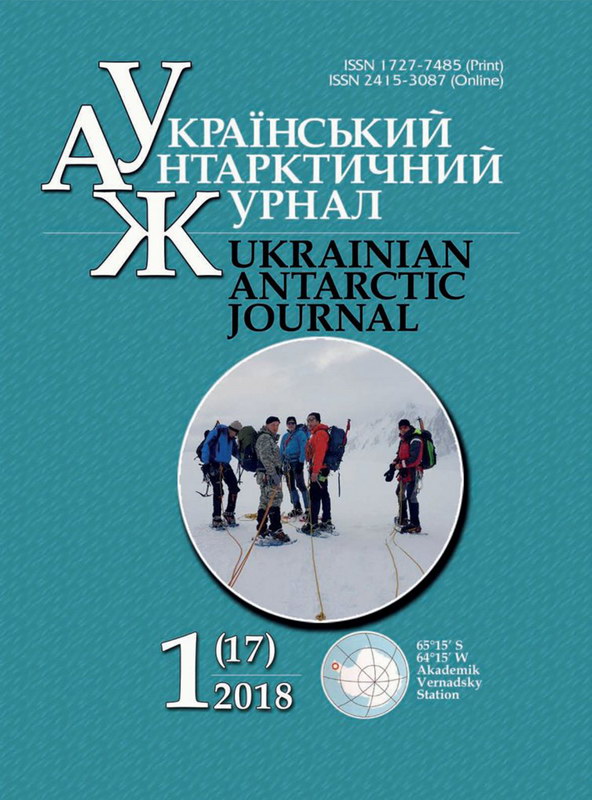- portal of the National Antarctic Scientific Center of Ukraine,
- data storage,
- local storage,
- remote storage,
- cloud storage

This work is licensed under a Creative Commons Attribution-NonCommercial-NoDerivatives 4.0 International License.
Abstract
The main goal is to create a repository of Antarctic data that will ensure the storage of all information in all areas of research conducted at the State Institution National Antarctic Research Center of the Ministry of Education and Science of Ukraine (GU NASC) and related organizations. The paper discusses the best methods for storing research data of GU NANZ, and also reviewed methods and corresponding means for implementing data warehouses, which allows to identify and describe possible implementation options for Antarctic data stores. The proposed system of criteria by which it is advisable to evaluate each of the methods. The system is based on the requirements for the parameters of the storage of Antarctic data, which are selected as a result of analyzing the heterogeneity of types, formats and types of data from Antarctic research.
As a result, three methods were proposed: local storage, remote storage, cloud storage, which differ in economic costs, availability, memory, security, and reliability of data storage. Given the results of the analysis, we can assume that the use of cloud storage is optimal for organizing the storage of Antarctic data. It is also advisable to combine the option of organizing the storage, providing for the integration of local storage and cloud storage. In this case, the disadvantages of local storage can be reduced by placing a certain amount of resources in the cloud. Depending on the type of storage chosen, a connection is made with the SharePoint 2013 software product on which the National Antarctic Data Center (NACAD) is built.
References
- Barseghyan, A. A., Kupriyanov, M. S., Stepanenko, V. V., Kholod, I. I. 2004. Methods and models of data analysis:OLAP and Data Mining. SPb.: BHV-Petersburg, 336.
- Globa, L. S., Moroz, I. V., Novogrudska, R. L., Mochalkina, K. S., Kuzin, I. O. 2011. Creation of a single data space for Antarctic research data, Antarctic Magazine, 10-11, 343-351.
- Cloud Storage Test Results [Electronic Resource] Electr. Data: https://msdn.microsoft.com/en-us/library/dn770227.aspx This access was granted on December 10, 2016.
- Features of MS Azure [Electronic resource] Electr. Data: https://habrahabr.ru/company/microsoft/blog/155617. Date of Access 12.12.2016.
- Azure BLOB-Storages [Electronic resource] Electr. Data: https://azure.microsoft.com/en-us/services/storage/blobs. Date of Access: 10.10.2017.
- Inmon, W.H. 2005. Building the Data Warehouse, 4th Edition.Hoboken, NJ:Wiley, 576.
- Louden, Bill. 1983. "Increase Your 100's Storage with 128K from Compuserve". Portable 100 (New England Publications Inc.). 1, 1, 22.
- Microsoft about Share Point 2013 [Electronic resource] Electr. Data: http://technet.microsoft.com/en-us/library/ff607742%28v=office.15%29. Date of Access: 04/25/ 2016.
- Koval, A., Globa, L., Novogrudska, R. 2017. The approach to web services composition, Advances in Intelligent Systems and Computing, 534, Springer, 293-304. https://doi.org/10.1007/978-3-319-48429-7_27.

